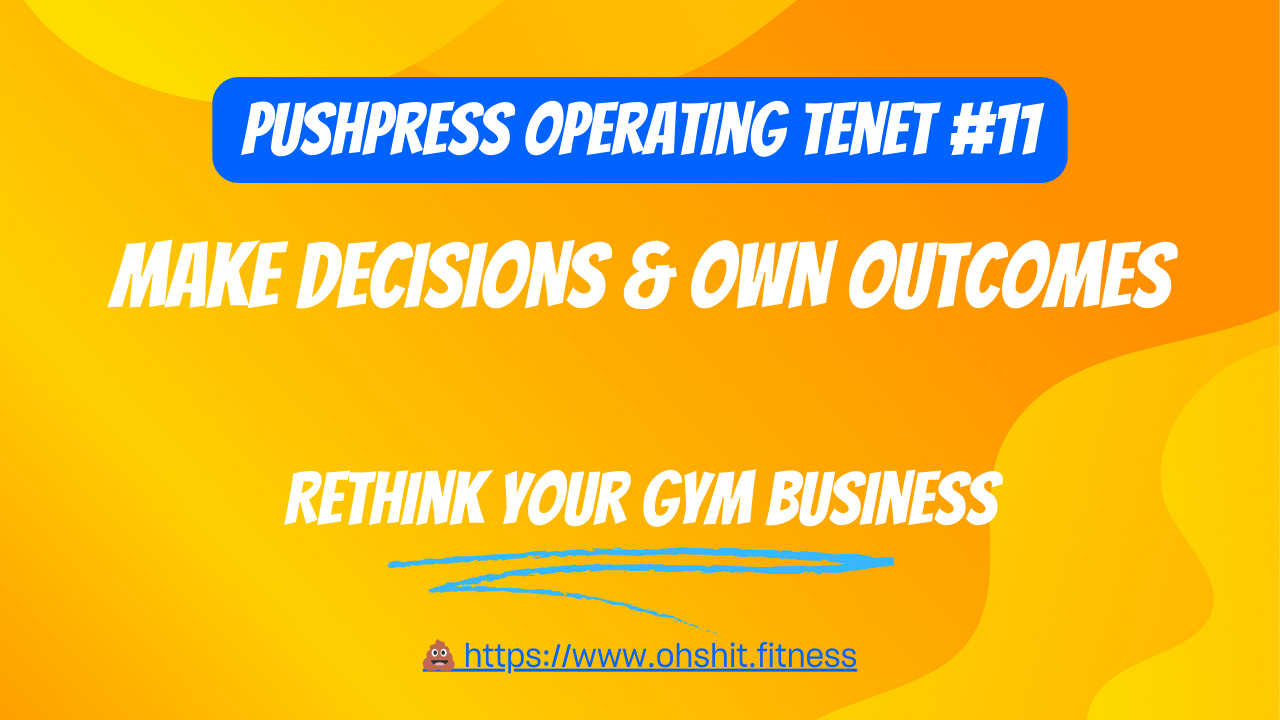PushPress Operating Tenet #12: Make Decisions & Own Outcomes
How to Approach Decision Making to Drive Customer Value and Company Progress Faster
READ TIME: 2 MINUTES
TLDR: Waiting for perfect clarity kills businesses. The winners make decisions with incomplete information, communicate clearly, own the results, and course-correct quickly. Slow or indecisive decision-making is still deciding—it's just the worst possible option.
Remember when we ditched our fluffy core values for actionable operating tenets? Today we're tackling a critical leadership tenet:
Make Decisions & Own Outcomes. Even with lack of clarity, great leaders step up and drive decisions. When ownership is unclear, they take initiative, collaborate across teams, and ensure momentum isn't lost.
"A good plan violently executed now is better than a perfect plan executed next week."
— General George S. Patton
Why Businesses Stall Out
Businesses don't fail from bad decisions. They die from slow or indecisive decisions.
There's always a "fog of war" in business. Perfect clarity is a myth.
I see this playing out in gyms and software businesses alike. Whether it's a gym owner hesitating on a new pricing model or our dev team stalling on a feature release, the paralysis is the same. Fear of being "wrong" creates endless research loops while competition moves forward.
When someone steps up, takes ownership, and drives a decision (imperfectly or not) - we see progress faster.
Finding the Decision Sweet Spot
The secret isn't waiting for perfect information. It's developing the skill to recognize when you have enough clarity to start moving.
During COVID, gyms were shutting down hourly. We made massive product shifts in days based on limited information. We launched with what we knew, then refined daily as new information emerged.
Two-Way Doors vs. One-Way Doors
Most decisions aren't permanent. Amazon calls these "two-way doors" - easily reversible choices.
Don't treat every decision like it's life-or-death. That's decision paralysis.
At PushPress, we transform big, scary decisions into smaller, reversible steps:
Complete system overhaul? Test one component first.
New pricing structure? Pilot with new customers only.
Major feature? Build a simplified version to test.
This isn't just safer—it's faster. Big decisions paralyze. Small decisions flow.
Beware the sunk cost trap. When data shows you're wrong, pivot immediately. Your ego isn't worth your business.
Decisions vs. Outcomes
Making good decisions and getting good outcomes aren't always connected. The magic happens when you:
Make the decision
Communicate clearly
Own the results (even the bad ones)
Course-correct without ego
The Hidden Cost of Indecision
"I need more time" isn't neutral—it's actively harmful:
Your team loses confidence
Opportunities vanish
Problems grow
Mental energy drains
Not deciding quickly IS deciding. It's just the worst decision.
How This Applies To Your Business
When faced with a decision:
Determine if you have enough critical information
Set a deadline
Make the call
Own the outcome
Adjust as needed
A good-enough decision today beats a perfect decision next month.
The Bottom Line
The best business owners aren't the ones who never make mistakes. They're the ones who build the muscle of course correction.
Being wrong isn't fatal—being slow or indecisive is.
The next tenet: "Foster Trust & Collaboration" - How transparency, trust, and collaboration builds unstoppable teams



